American state election
| |||||||||||||||||
| |||||||||||||||||
| |||||||||||||||||
The 1851 Michigan gubernatorial election was held on November 4, 1851. Democratic nominee Robert McClelland defeated Whig nominee Townsend E. Gidley with 58.50% of the vote.
| |||||||||||||||||
| |||||||||||||||||
| |||||||||||||||||
| Elections in Michigan |
|---|
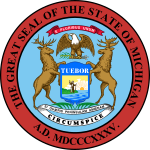 |
The 1851 Michigan gubernatorial election was held on November 4, 1851. Democratic nominee Robert McClelland defeated Whig nominee Townsend E. Gidley with 58.50% of the vote.
Major party candidates
| Party | Candidate | Votes | % | |
|---|---|---|---|---|
| Democratic | Robert McClelland | 23,827 | 58.50 | |
| Whig | Townsend E. Gidley | 16,901 | 41.50 | |
| Total votes | 40,728 | 100 | ||
| Democratic hold | ||||

Thomas Chipman McRae was an American attorney and politician from Arkansas. He served as a Democratic member of the United States House of Representatives and the 26th Governor of Arkansas, from 1921 to 1925.
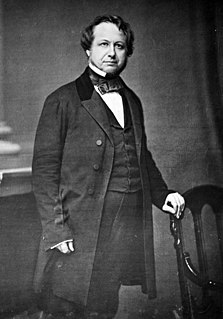
The 1851 Pennsylvania gubernatorial election occurred on October 14, 1851. Incumbent governor William F. Johnston, a Whig, was a candidate for re-election but was defeated by Democratic candidate William Bigler.
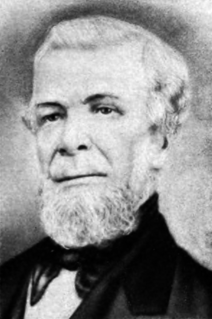
Townsend E. Gidley was an American politician who served eight terms in the Michigan Legislature and was instrumental in the drafting of the state's first constitution.
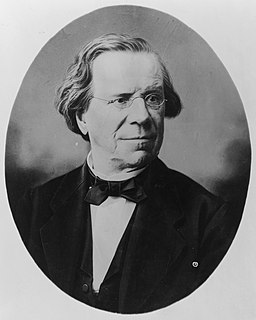
The 1852 Michigan gubernatorial election was held on November 2, 1852. Incumbent Democrat Robert McClelland defeated Whig nominee Zachariah Chandler with 51.07% of the vote.

The 1855 Connecticut gubernatorial election was held on April 2, 1855. Former state legislator and American Party nominee William T. Minor defeated former congressman and Democratic nominee Samuel Ingham and incumbent governor and Whig nominee Henry Dutton with 43.51% of the vote.

The 1853 Connecticut gubernatorial election was held on April 4, 1853. Incumbent governor and Democratic Party nominee Thomas H. Seymour defeated former state legislator and Whig nominee Henry Dutton and former state legislator and Free Soil nominee Francis Gillette with 51.01% of the vote.

The 1851 Connecticut gubernatorial election was held on April 7, 1851. It was a rematch of the 1850 Connecticut gubernatorial election. Incumbent governor and Democratic Party nominee Thomas H. Seymour defeated former state legislator and Whig nominee Lafayette S. Foster with 48.94% of the vote.

The 1851 Vermont gubernatorial election was held on September 2, 1851. The state continued its support for the Whig party, and Whig Governor Charles K. Williams was easily re-elected to a one-year term. The strong showing of the Free Soil Party candidate Timothy P. Redfield also showed that Vermont was on its way to becoming an anti-slavery bastion. The Democratic nominee, John S. Robinson went on to win the governorship in 1853.

The 1851 Massachusetts gubernatorial election was held on November 10.

The 1850 Massachusetts gubernatorial election was held on November 12.

The 1840 Delaware gubernatorial election was held on November 3, 1840. Whig Governor Cornelius Comegys was unable to seek re-election to a second term. Former State Representative William B. Cooper ran as the Whig nominee to succeed Comegys and faced Democratic nominee Warren B. Jefferson in the general election. Cooper won the largest victory in a gubernatorial election since 1819, and was ushered into office with a sizable Whig majority in the legislature.

The 1846 Delaware gubernatorial special election was held on November 3, 1846. A year into the term of Whig Governor Thomas Stockton, elected in 1844, he died, elevating State Senate Speaker Joseph Maull to the governorship. Maull, in turn, also died, making State House Speaker William Temple Governor. Former State Representative Peter F. Causey ran as the Whig nominee to succeed Temple, and faced former State Senator William Tharp, the Democratic nominee from 1844. Tharp narrowly defeated Causey, returning the Governorship to the Democratic Party.
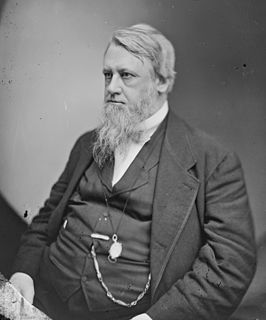
The 1849 Rhode Island gubernatorial election was held on April 4, 1849.

The 1853 Ohio gubernatorial election was held on October 11, 1853.

The 1836 Ohio gubernatorial election was held on October 11, 1836.
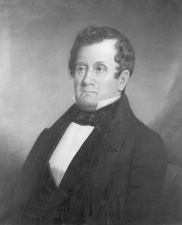
The 1839 New Hampshire gubernatorial election was held on March 12, 1839.

The 1842 New Hampshire gubernatorial election was held on March 8, 1842.

The 1839 Vermont gubernatorial election was held on September 3, 1839. Incumbent Whig Governor Silas H. Jennison defeated Democratic nominee Nathan Smilie with 52.47% of the vote.

The 1841 Vermont gubernatorial election was held on September 7, 1841.

The 1842 Vermont gubernatorial election was held on September 6, 1842.